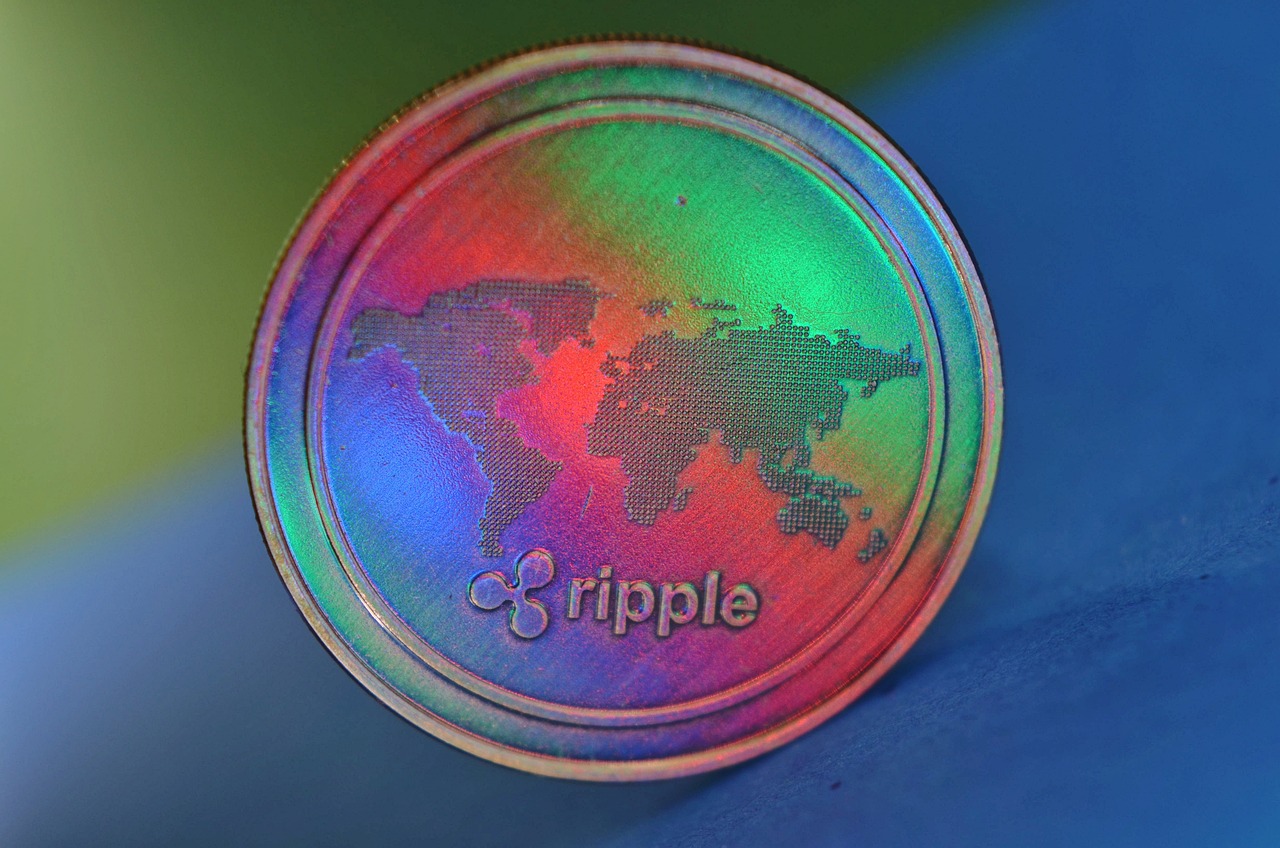Fantom - Exploring the Future of Smart Contracts
Welcome to the fascinating world of Fantom, a blockchain platform that is not just another player in the field but a game-changer in the realm of smart contracts. As we dive into this innovative ecosystem, you'll discover how Fantom is paving the way for faster, more efficient, and cost-effective solutions that could revolutionize various industries. Imagine a world where transactions happen in the blink of an eye, and the costs associated with them are minimal. That's the promise of Fantom, and it's not just a dream—it's becoming a reality!
At its core, Fantom is designed to tackle the common challenges faced by traditional blockchain platforms, such as slow transaction speeds and high fees. By leveraging cutting-edge technology, Fantom aims to provide a seamless experience for developers and users alike. But what sets it apart? Let’s embark on this journey to explore the intricate details of Fantom's architecture, its unique features, and the potential impact it could have on our digital landscape.
As we navigate through this article, keep in mind that the world of blockchain is constantly evolving. Fantom is at the forefront of this evolution, bringing with it a host of advantages that could reshape how we think about decentralization, security, and the overall user experience. So, whether you're a developer looking for a robust platform to build your applications or simply a curious reader wanting to learn more about the future of smart contracts, there's something here for everyone. Buckle up, as we dive deep into the innovative technology behind Fantom and its promising future!
Fantom utilizes a unique consensus mechanism called Lachesis, which enhances speed and scalability. This section will break down how this technology differentiates Fantom from other blockchain platforms.
Fantom offers numerous features, including low transaction fees and high throughput. Here, we will explore these features and how they contribute to its appeal for developers and users.
Decentralization is crucial for any blockchain. This subsection examines how Fantom maintains security while promoting a decentralized network, ensuring user trust and system integrity.
The Lachesis consensus mechanism is central to Fantom's operation. This section will explain how it works and why it's considered a breakthrough in blockchain technology.
Scalability is a major concern for blockchain networks. Here, we discuss how Fantom addresses scalability challenges, allowing for a higher number of transactions per second.
Fantom's technology opens up a range of use cases across various sectors. This section will highlight some of the most promising applications of Fantom's smart contracts.
In this section, we will compare Fantom with other leading blockchain platforms, examining their strengths and weaknesses in terms of smart contract capabilities.
Ethereum is a pioneer in smart contracts. This subsection will analyze how Fantom's approach differs from Ethereum's, particularly in terms of speed and cost efficiency.
Binance Smart Chain is another competitor in the space. Here, we will explore the differences between Fantom and Binance Smart Chain, focusing on their respective ecosystems and performance.
- What is Fantom? Fantom is a blockchain platform designed for smart contracts, aiming to provide fast and low-cost transactions.
- How does Fantom achieve high speed? Fantom utilizes the Lachesis consensus mechanism, which allows for rapid transaction processing and high scalability.
- Is Fantom secure? Yes, Fantom maintains a decentralized network that ensures security and user trust while facilitating efficient transactions.
- How does Fantom compare to Ethereum? While Ethereum is a pioneer, Fantom offers improved speed and lower transaction costs, making it an appealing alternative.
- What industries can benefit from Fantom? Fantom's technology can be applied across various sectors, including finance, supply chain, and healthcare, among others.

Understanding Fantom's Technology
Fantom is not just another name in the blockchain space; it’s a game changer. At the heart of its innovation lies a unique consensus mechanism known as Lachesis. This groundbreaking technology is what sets Fantom apart from traditional blockchain platforms, allowing it to achieve extraordinary speed and scalability. Imagine a highway where traffic flows seamlessly, with no congestion—this is what Lachesis aims to create in the world of decentralized applications.
To understand how Lachesis works, it’s essential to grasp the fundamental differences between it and more conventional consensus algorithms like Proof of Work (PoW) or Proof of Stake (PoS). While PoW requires miners to solve complex mathematical problems, and PoS relies on validators holding a stake in the network, Lachesis operates on a principle called asynchronous Byzantine Fault Tolerance (aBFT). This means that transactions can be confirmed in a matter of seconds, without the need for extensive validation processes, thus significantly enhancing the user experience.
Moreover, Lachesis allows for high throughput, meaning Fantom can handle thousands of transactions per second. This capability is crucial for applications that require quick and efficient processing, such as decentralized finance (DeFi) platforms and supply chain solutions. With Fantom, developers can build applications that are not only faster but also more cost-effective due to lower transaction fees. The following table summarizes the key differences between Lachesis and traditional consensus mechanisms:
| Feature | Lachesis | Proof of Work | Proof of Stake |
|---|---|---|---|
| Speed | Seconds | Minutes | Seconds to Minutes |
| Scalability | High | Low | Medium |
| Energy Efficiency | Very High | Low | Medium |
| Decentralization | High | High | Medium |
This innovative approach not only enhances the speed and efficiency of transactions but also plays a vital role in maintaining the decentralization and security that are crucial for any blockchain network. In a world where data breaches and cyber threats are rampant, Fantom’s technology ensures that users can trust the system while enjoying a seamless experience.
In summary, Fantom’s technology, powered by the Lachesis consensus mechanism, is a significant leap forward in the blockchain realm. It combines speed, scalability, and security, making it an attractive option for developers and businesses looking to leverage the benefits of smart contracts. As we move deeper into the digital age, platforms like Fantom will likely lead the charge in redefining how we think about and interact with technology.

Key Features of Fantom
Fantom stands out in the crowded blockchain landscape thanks to its remarkable key features that cater to both developers and users alike. One of the most appealing aspects of Fantom is its low transaction fees. Unlike many other blockchain platforms that can charge exorbitant fees, Fantom ensures that users can execute transactions without breaking the bank. This affordability opens the door for more widespread adoption, especially among smaller businesses and individual developers who may have been deterred by high costs.
Another significant feature is Fantom's high throughput, which allows it to process thousands of transactions per second. Imagine a bustling highway where cars zoom by effortlessly; that's how Fantom operates. This speed is crucial for applications that require real-time processing, such as finance and gaming. The ability to handle a large volume of transactions without lag not only enhances user experience but also positions Fantom as a viable option for enterprise-level applications.
Furthermore, Fantom's architecture is designed with interoperability in mind. It facilitates seamless communication between different blockchain networks, which is essential for the future of decentralized applications (dApps). This means that developers can create solutions that leverage the strengths of multiple blockchains, thus maximizing their potential. The more interconnected the ecosystem, the greater the possibilities for innovation.
In addition, Fantom places a strong emphasis on decentralization and security. In a world where trust is paramount, Fantom's approach ensures that no single entity has control over the network. Instead, power is distributed among various nodes, enhancing the system's resilience against attacks and failures. This decentralized nature not only fosters user trust but also aligns with the core principles of blockchain technology.
To further illustrate its features, here is a summary table comparing some of Fantom's key attributes with those of traditional blockchain platforms:
| Feature | Fantom | Traditional Platforms |
|---|---|---|
| Transaction Fees | Low | High |
| Throughput | Thousands per second | Limited |
| Decentralization | High | Varies |
| Interoperability | Strong | Limited |
In conclusion, the combination of low fees, high throughput, interoperability, and a strong focus on decentralization and security makes Fantom an attractive choice for developers looking to build the next generation of blockchain applications. It’s like having a Swiss Army knife in your pocket—versatile, efficient, and ready for any challenge that comes your way.
- What makes Fantom different from other blockchains? Fantom's unique consensus mechanism, low transaction fees, and high throughput set it apart from other blockchain platforms.
- Can developers easily build on Fantom? Yes! Fantom's architecture is designed to be developer-friendly, making it easy to create and deploy decentralized applications.
- Is Fantom secure? Absolutely! Fantom maintains a high level of security through its decentralized network, ensuring user trust and system integrity.

Decentralization and Security
In the world of blockchain, decentralization and security are two pillars that uphold the integrity and trustworthiness of the system. Fantom distinguishes itself by implementing a robust decentralized architecture that not only enhances security but also promotes user trust. Imagine a world where your data and transactions are not controlled by a single entity but are instead distributed across a network of nodes. This is the essence of decentralization, and it’s what sets Fantom apart from traditional systems.
Fantom employs a unique approach to decentralization that ensures every participant in the network has a voice. The nodes that validate transactions are spread across various geographical locations, making it extremely difficult for any malicious actor to compromise the network. This is akin to a team of superheroes, each guarding a piece of the city, ensuring that no villain can take control of the entire area. The more nodes there are, the stronger the network becomes.
Moreover, Fantom’s Lachesis consensus mechanism plays a crucial role in enhancing security. This innovative mechanism allows for rapid transaction validation without sacrificing decentralization. Instead of relying on a few powerful nodes, Lachesis enables a multitude of nodes to participate in the consensus process, which not only speeds up transactions but also fortifies the network against attacks. In essence, it’s like having an army of defenders rather than just a handful of soldiers.
Another significant aspect of Fantom's security model is its resilience against common threats faced by blockchain networks. By utilizing advanced cryptographic techniques and continuous monitoring, Fantom can identify and mitigate potential vulnerabilities before they can be exploited. This proactive approach to security is akin to having a security system that not only alerts you to intrusions but also prevents them from happening in the first place.
To illustrate the effectiveness of Fantom's decentralization and security measures, let’s take a look at the following table that compares Fantom with traditional centralized systems:
| Feature | Fantom | Traditional Centralized Systems |
|---|---|---|
| Control | Distributed among nodes | Single entity control |
| Security | High, due to decentralization | Vulnerable to attacks |
| Transaction Speed | Fast, with low latency | Variable, often slow |
| Transparency | Open ledger accessible to all | Limited visibility |
As you can see, Fantom’s decentralized nature not only enhances security but also provides a more efficient and transparent environment for users. This is particularly important in industries where trust and data integrity are paramount, such as finance, healthcare, and supply chain management. By leveraging the power of decentralization, Fantom is paving the way for a more secure digital future.
In conclusion, the combination of decentralization and security in Fantom’s architecture creates a resilient blockchain platform that can withstand the challenges of the digital age. As we continue to explore the potential of smart contracts and decentralized applications, it’s clear that Fantom is at the forefront of this revolution, ensuring that users can transact with confidence.
- What is decentralization in blockchain? Decentralization refers to the distribution of control and decision-making across a network, rather than being concentrated in a single entity.
- How does Fantom ensure security? Fantom employs the Lachesis consensus mechanism and advanced cryptographic techniques to maintain security while allowing rapid transaction processing.
- Why is decentralization important? Decentralization enhances security, transparency, and trust in the system, making it harder for malicious actors to manipulate or control the network.
- What industries can benefit from Fantom's technology? Industries such as finance, healthcare, and supply chain management can greatly benefit from the enhanced security and efficiency provided by Fantom's decentralized platform.

Consensus Mechanism Explained
The heart of Fantom's blockchain innovation lies in its unique consensus mechanism known as Lachesis. This mechanism is not just a technical detail; it's a game changer in the realm of smart contracts and decentralized applications. Unlike traditional consensus algorithms that can bog down performance with lengthy validation processes, Lachesis operates on a principle that prioritizes speed and efficiency.
So, what makes Lachesis stand out? To start, it employs a Directed Acyclic Graph (DAG) structure, which allows transactions to be processed in parallel rather than sequentially. This means that multiple transactions can be validated and confirmed simultaneously, significantly reducing the time it takes to finalize a transaction. Imagine a busy highway where cars can travel side by side instead of waiting in a single lane—this is how Lachesis enhances throughput.
Moreover, Lachesis achieves asynchronous consensus. This means that validators do not need to communicate with each other in real-time to reach an agreement on the state of the blockchain. Instead, they can operate independently, which not only speeds up the process but also increases the overall scalability of the network. As a result, Fantom can handle thousands of transactions per second, making it one of the fastest blockchain platforms available today.
To better understand how Lachesis works, let’s break it down into a few key components:
- Finality: Transactions on Fantom are finalized in under two seconds, which is a significant improvement over many other platforms.
- Security: The mechanism ensures that even if some nodes go offline, the network remains secure and operational.
- Decentralization: Lachesis allows for a decentralized network where no single entity has control, promoting trust among users.
In summary, the Lachesis consensus mechanism is a robust framework that not only enhances the performance of the Fantom blockchain but also addresses some of the most pressing issues faced by traditional blockchain systems. By leveraging a combination of speed, efficiency, and decentralization, Fantom is paving the way for the future of smart contracts and decentralized applications.
Here are some common questions about Fantom's consensus mechanism:
- What is the main advantage of using Lachesis? The main advantage is its ability to process transactions quickly and efficiently, making the network highly scalable.
- How does Lachesis ensure security? It maintains security through a decentralized network where multiple validators confirm transactions, reducing the risk of fraud.
- Can Lachesis handle a high volume of transactions? Yes, it can handle thousands of transactions per second, making it one of the fastest blockchain solutions available.

Scalability Solutions
When it comes to blockchain technology, scalability is often the elephant in the room. Many platforms struggle to handle an increasing number of transactions, leading to slow processing times and high fees. However, Fantom has stepped up to the plate with innovative solutions that not only tackle these challenges but also redefine what scalability means in the blockchain realm.
At the heart of Fantom's scalability is its unique architecture, which is designed to support a high throughput of transactions. Unlike traditional blockchains that process transactions in a linear fashion, Fantom employs a directed acyclic graph (DAG) structure. This means that transactions can be processed simultaneously rather than sequentially, allowing for a significant increase in transaction speed. Imagine a bustling highway with multiple lanes where cars can travel side by side, rather than a single-lane road where traffic is constantly at a standstill. This is the kind of efficiency that Fantom brings to the table.
Moreover, Fantom's Lachesis consensus mechanism plays a crucial role in its scalability. By enabling asynchronous consensus, Lachesis allows nodes to validate transactions independently without waiting for a global consensus. This reduces the time it takes to confirm transactions and opens the door for a higher number of transactions per second (TPS). In fact, Fantom boasts the capability to handle thousands of TPS, making it a formidable player in the blockchain space.
To illustrate the difference in scalability between Fantom and other blockchains, consider the following table:
| Blockchain Platform | Transaction Speed (TPS) | Consensus Mechanism | Average Transaction Fee |
|---|---|---|---|
| Fantom | Thousands | Lachesis (Asynchronous) | Low |
| Ethereum | 15-30 | Proof of Work (Transitioning to Proof of Stake) | High |
| Binance Smart Chain | Up to 100 | Proof of Staked Authority | Low |
This table highlights how Fantom stands out with its remarkable transaction speed and low fees. The ability to handle thousands of transactions per second means that developers can build applications that require rapid processing without the fear of congestion or high costs. In a world where speed is king, Fantom is positioning itself as a leader.
In addition to its architectural innovations, Fantom also employs a variety of techniques to ensure that its network remains scalable as it grows. These include sharding, which divides the network into smaller, manageable pieces, and layer-2 solutions that facilitate off-chain transactions while maintaining security and decentralization. By implementing these strategies, Fantom ensures that as more users join the platform, performance remains unaffected.
In summary, Fantom's approach to scalability is not just about increasing numbers; it's about creating a robust ecosystem that can support a wide range of applications and use cases. Whether it's decentralized finance (DeFi), supply chain management, or digital identity verification, Fantom's scalability solutions pave the way for innovative applications that can thrive in a fast-paced digital landscape.

Use Cases for Fantom
Fantom’s innovative technology is not just a theoretical marvel; it has real-world applications that are transforming various industries. With its high speed, low transaction costs, and robust smart contract capabilities, Fantom is paving the way for new solutions in sectors ranging from finance to supply chain management. Imagine a world where transactions are not only faster but also more secure and cost-effective. That’s the promise Fantom holds!
One of the most exciting use cases for Fantom is in the realm of decentralized finance (DeFi). DeFi has taken the financial world by storm, and Fantom is positioning itself as a key player in this space. By leveraging its unique features, developers can create decentralized applications (dApps) that offer services like lending, borrowing, and trading without the need for traditional intermediaries. This not only reduces costs but also increases accessibility for users around the globe.
Moreover, Fantom is making significant strides in the supply chain and logistics sectors. With its ability to provide real-time tracking and verification of goods, businesses can enhance transparency and efficiency in their operations. For instance, a company could utilize Fantom’s smart contracts to automatically trigger payments upon delivery confirmation, streamlining the entire supply chain process. This level of automation not only saves time but also minimizes the risk of fraud.
In the healthcare industry, Fantom’s technology can be utilized to manage patient records securely. Imagine a decentralized platform where patients have complete control over their medical data, granting access only to authorized personnel. This not only protects sensitive information but also improves the quality of care by providing healthcare providers with accurate and up-to-date patient histories.
Additionally, the gaming industry is another sector ripe for innovation through Fantom. With the rise of blockchain-based gaming, Fantom’s fast transaction speeds can enhance user experiences, allowing for seamless in-game purchases and trades. Gamers can truly own their assets, as these can be securely traded or sold on decentralized marketplaces powered by Fantom’s technology.
To summarize, here are some of the notable use cases for Fantom:
- Decentralized Finance (DeFi): Enabling lending, borrowing, and trading without intermediaries.
- Supply Chain Management: Enhancing transparency and efficiency through real-time tracking.
- Healthcare Data Management: Securing patient records and improving data accessibility.
- Gaming Industry: Facilitating seamless transactions and true ownership of in-game assets.
As we can see, Fantom is not just another blockchain platform; it is a versatile solution that can address a diverse range of challenges across multiple industries. The potential for innovation is vast, and as more developers and businesses explore the capabilities of Fantom, we can expect to witness a wave of transformative applications that could redefine how we interact with technology.

Comparing Fantom with Other Blockchain Platforms
When it comes to blockchain technology, the landscape is vast and continually evolving. With numerous platforms vying for attention, it's crucial to understand how they stack up against each other. Fantom is making waves, but how does it compare to other heavyweights like Ethereum and Binance Smart Chain? Let's dive into the specifics!
First off, one of the most significant differentiators for Fantom is its speed. Thanks to its unique Lachesis consensus mechanism, Fantom can process transactions in mere seconds. This is a stark contrast to Ethereum, which has faced criticism for its slower transaction times, especially during peak usage periods. Imagine trying to send a package through a congested city versus a streamlined highway—Fantom is that highway, allowing for a smoother and quicker delivery of transactions.
Another critical aspect to consider is transaction costs. Fantom offers remarkably low fees, making it an attractive option for developers and users alike. In comparison, Ethereum has been notorious for its high gas fees, which can deter smaller transactions and limit the platform's accessibility. This cost efficiency can be a game-changer for projects that require numerous microtransactions, such as gaming or decentralized finance (DeFi) applications.
Now, let's take a closer look at how Fantom and Ethereum stack up in a few key areas:
| Feature | Fantom | Ethereum |
|---|---|---|
| Transaction Speed | 1-2 seconds | 15-30 seconds |
| Transaction Fees | Low (cents) | High (up to $50 during peak times) |
| Consensus Mechanism | Lachesis | Proof of Work (transitioning to Proof of Stake) |
Moving on to Binance Smart Chain, which has gained traction for its fast transactions and low fees, it still operates on a different model. While Binance Smart Chain uses a Proof of Staked Authority (PoSA) consensus mechanism, Fantom's Lachesis offers a more decentralized approach. This can be crucial for projects that prioritize decentralization over mere speed and cost efficiency.
In terms of ecosystem, both Fantom and Binance Smart Chain have their unique advantages. Binance Smart Chain benefits from the vast user base of the Binance exchange, which can drive adoption and liquidity. On the other hand, Fantom's focus on interoperability and its commitment to supporting various decentralized applications (dApps) makes it a versatile choice for developers looking to innovate.
Ultimately, the choice between these platforms boils down to specific project needs. Are you looking for speed and low costs? Fantom might be your best bet. However, if you want to tap into a larger ecosystem with robust liquidity options, Binance Smart Chain could be the way to go. And let’s not forget about Ethereum, which, despite its challenges, remains a pioneer in the smart contract space.
- What is Fantom's main advantage over Ethereum? Fantom's main advantage is its transaction speed and lower fees, making it more appealing for various applications.
- How does Fantom ensure decentralization? Fantom maintains decentralization through its Lachesis consensus mechanism, which allows for a distributed network of validators.
- Can I build dApps on Fantom? Absolutely! Fantom is designed to support decentralized applications, making it a great platform for developers.

Fantom vs. Ethereum
When it comes to the world of smart contracts, Ethereum has long been the reigning champion, but Fantom is making waves that can't be ignored. Let's dive into what sets these two platforms apart. Ethereum, launched in 2015, introduced the concept of smart contracts to the blockchain community, allowing developers to build decentralized applications (dApps) on its platform. However, as the popularity of Ethereum surged, so did its scalability issues, leading to slow transaction speeds and skyrocketing gas fees. In contrast, Fantom, which emerged later, was designed with these challenges in mind.
One of the most significant differences lies in their consensus mechanisms. Ethereum currently uses Proof of Work (PoW), which, while secure, requires substantial computational power and energy consumption. On the other hand, Fantom employs the innovative Lachesis consensus mechanism, which is a form of Proof of Stake (PoS). This allows Fantom to process transactions in a matter of seconds, significantly enhancing its throughput and efficiency. To put it simply, if Ethereum is like a busy highway during rush hour, Fantom is the express lane that keeps moving smoothly.
Let's break down some key comparisons:
| Feature | Ethereum | Fantom |
|---|---|---|
| Consensus Mechanism | Proof of Work (transitioning to Proof of Stake) | Lachesis (Proof of Stake) |
| Transaction Speed | 15-30 seconds | 1-2 seconds |
| Transaction Fees | High (can exceed $50 during peak times) | Low (typically a few cents) |
| Scalability | Limited (due to congestion) | Highly scalable (thousands of transactions per second) |
Another area where Fantom shines is in its transaction fees. While Ethereum users often face exorbitant gas fees, especially during peak usage times, Fantom's fees remain consistently low. This affordability makes it an attractive option for developers and users alike, allowing for a more inclusive ecosystem where even small transactions can be economically viable.
Furthermore, the developer experience differs significantly between the two platforms. Ethereum has a well-established ecosystem with a plethora of tools and resources, making it easier for developers to get started. However, Fantom is rapidly closing the gap by offering robust support and a growing community. This means that as more developers flock to Fantom, we can expect a surge in innovative dApps and smart contracts that leverage its unique capabilities.
In summary, while Ethereum has paved the way for smart contracts and decentralized applications, Fantom is redefining the landscape with its speed, low fees, and innovative technology. The competition is heating up, and it will be fascinating to see how both platforms evolve in the coming years. Will Ethereum overcome its challenges and maintain its dominance, or will Fantom's rise signal a shift in the blockchain paradigm? Only time will tell.
- What is the main advantage of using Fantom over Ethereum? Fantom offers significantly faster transaction speeds and lower fees, making it more efficient for developers and users.
- Can I migrate my Ethereum dApp to Fantom? Yes, many developers are exploring ways to bridge their applications to Fantom to take advantage of its features.
- Is Fantom secure? Yes, Fantom employs a decentralized consensus mechanism that ensures security while maintaining high performance.

Fantom vs. Binance Smart Chain
When diving into the world of blockchain, one can't help but notice the rising competition among various platforms. Among these, Fantom and Binance Smart Chain (BSC) have emerged as two significant players, each boasting unique features and capabilities. But how do they stack up against each other in the realm of smart contracts? Let’s explore the intricacies of both platforms, highlighting their strengths and weaknesses.
Fantom, with its innovative Lachesis consensus mechanism, promises lightning-fast transaction speeds and near-instant finality. This is a game-changer for developers and users who demand efficiency. In contrast, Binance Smart Chain, known for its compatibility with Ethereum’s ecosystem, offers a robust environment for decentralized applications (dApps) but often grapples with congestion issues during peak times. This difference in performance can significantly impact user experience, making Fantom a more attractive option for those prioritizing speed.
Another critical factor to consider is the cost of transactions. Fantom is renowned for its low transaction fees, which can often be fractions of a cent. This is particularly appealing for developers looking to build and scale applications without being bogged down by high costs. On the other hand, while BSC also offers relatively low fees compared to Ethereum, they can still fluctuate based on network demand, leading to unpredictable costs for users.
In terms of ecosystem and community support, Binance Smart Chain has a more established presence, thanks in part to its affiliation with Binance, one of the largest cryptocurrency exchanges globally. This affiliation has fostered a vibrant community and a plethora of dApps. However, Fantom is rapidly gaining traction, with a growing number of projects and a passionate community that values its unique offerings.
| Feature | Fantom | Binance Smart Chain |
|---|---|---|
| Consensus Mechanism | Lachesis | Proof of Staked Authority (PoSA) |
| Transaction Speed | Near-instant finality | Average of 3 seconds |
| Transaction Fees | Very low (fractions of a cent) | Low but variable |
| Community and Ecosystem | Rapidly growing | Well-established |
Ultimately, the choice between Fantom and Binance Smart Chain may come down to specific project needs. If speed and low costs are at the forefront, Fantom could be the clear winner. However, for those seeking a more established ecosystem with a wealth of resources, Binance Smart Chain remains a formidable contender. As the blockchain landscape continues to evolve, both platforms are likely to adapt and innovate, making it an exciting time to be involved in the space.
- What is the main advantage of using Fantom over Binance Smart Chain?
Fantom offers faster transaction speeds and lower fees, making it ideal for developers looking for efficiency. - Can I migrate my dApp from BSC to Fantom?
Yes, many developers are exploring cross-chain compatibility, and tools are available to facilitate this process. - Is Fantom secure?
Yes, Fantom employs robust security measures, including its unique consensus mechanism, to ensure the integrity of its network.
Frequently Asked Questions
- What is Fantom?
Fantom is a blockchain platform specifically designed for smart contracts. It aims to provide a fast, scalable, and secure environment for developers and users alike.
- How does Fantom's consensus mechanism work?
Fantom utilizes a unique consensus mechanism called Lachesis, which allows for faster transaction processing and greater scalability compared to traditional blockchain systems. This technology enables the network to handle thousands of transactions per second.
- What are the key features of Fantom?
Some of the standout features of Fantom include low transaction fees, high throughput, and robust security measures. These elements make it an attractive option for developers looking to build decentralized applications.
- How does Fantom ensure decentralization and security?
Fantom maintains decentralization by distributing control across a wide network of nodes, which enhances security and trust. This model prevents any single entity from having too much control, ensuring the integrity of the system.
- What are some use cases for Fantom's technology?
Fantom's technology can be applied in various sectors, including finance, supply chain management, and healthcare. Its smart contracts enable innovative solutions like automated transactions and real-time data sharing.
- How does Fantom compare to Ethereum?
While Ethereum is a pioneer in smart contracts, Fantom differentiates itself with faster transaction speeds and lower costs. This makes Fantom a compelling choice for developers seeking efficiency.
- What advantages does Fantom have over Binance Smart Chain?
Fantom offers a more advanced consensus mechanism and scalability solutions, which can lead to better performance in high-demand situations. Its ecosystem is also designed to support a wide range of applications.
- Is Fantom suitable for developers?
Absolutely! Fantom provides a developer-friendly environment with comprehensive documentation and tools, making it easier for developers to create and deploy their applications on the platform.
- How can I get started with Fantom?
You can get started with Fantom by visiting their official website, where you'll find resources, tutorials, and community support to help you navigate the platform.



















